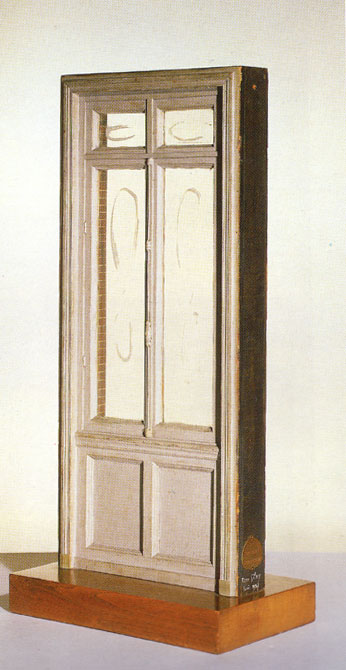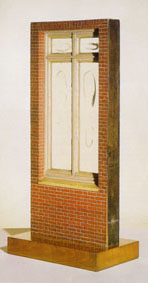

The Brawl at Austerlitz
or
La Bagarre d'Austerlitz
|
Original Version:
1921, Paris |
 |  |
| Original version (front), 1921 | Original version (verso), 1921 |
Just like the Readymade Fresh Widow, this piece was made by a carpenter according to Duchamp's specifications. Thus it also brings up the question of authorship. However, as Duchamp once explained, these two windows are not really the same at all: "I had another small window made, quite different from this one [Fresh Widow], with a brick wall" (D'Harnoncourt 295).
The front of the window is painted gray and the back painted in imitation brickwork; white marks, like those left by a glazier, adorn the glass panes and moderately obscure the view. On the base, "Marcel Duchamp" is Inscribed in white on one side while "Rrose Selavy/Paris 1921" marks the other. This signing by Duchamp's transsexual alter ego points to a gendered interpretation. However, this piece has received comparatively less attention than most other Readymades, so (to the best of the author's knowledge) this interpretation has not been very developed as of yet.
One thing that always may be discussed in reference to such a mysterious piece, however, is the title. The title of this The Brawl at Austerlitz proves quite intriguing. It has clear linguistic connotations; Duchamp himself called it "a simple alliteration on Gare d'Austerlitz, an important railroad station in Paris" (Schwarz 695). However, it also refers to Austerlitz itself, a "place in Austria where a battle was fought" (Cook 265). Cook explains that phonetically speaking the title is "just a simple pun produced by fusing three ordinary locations, La Bataille (d'Austerlits), La Bagarre, and La Gare d'Austerlitz" (265).